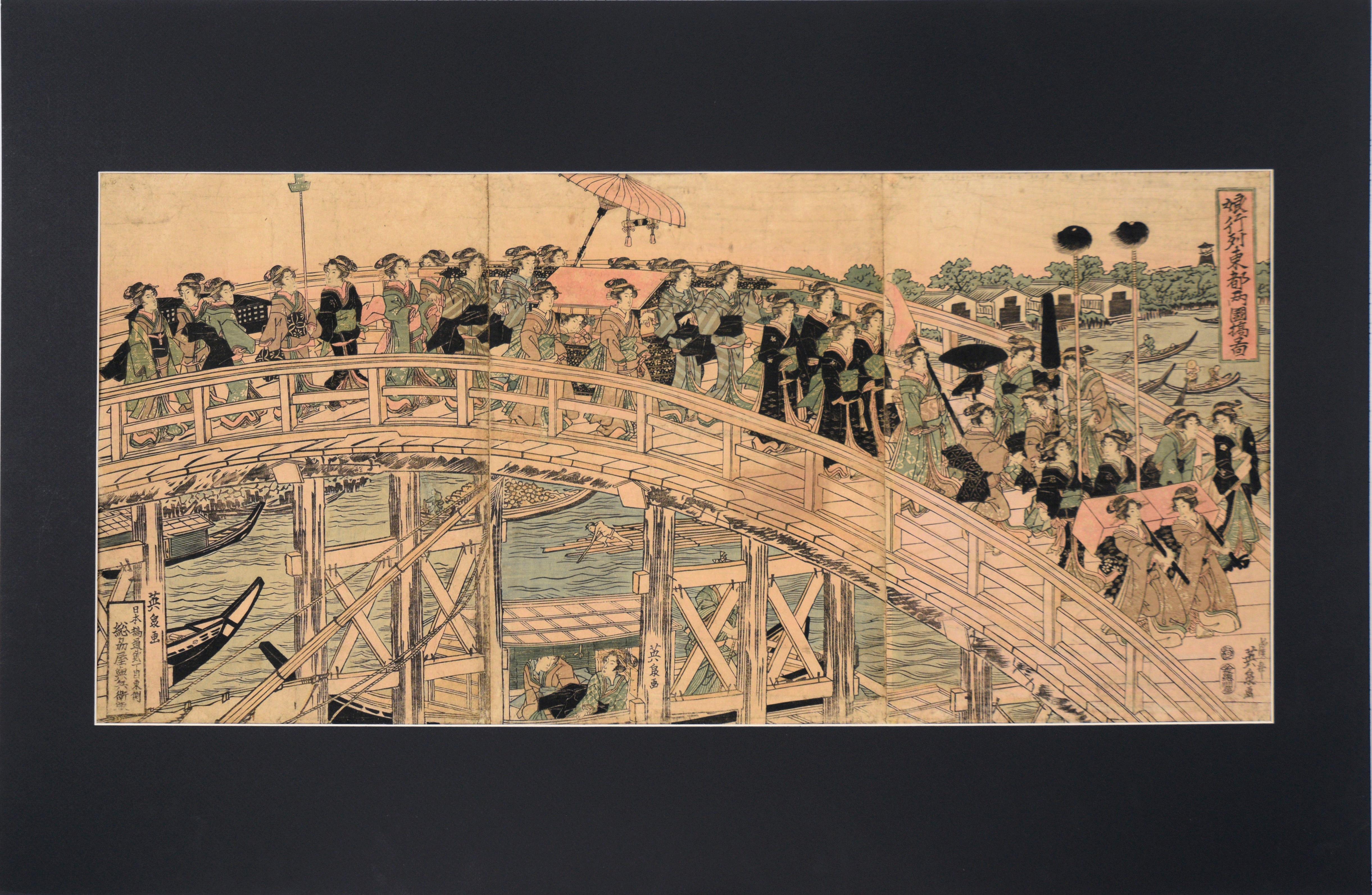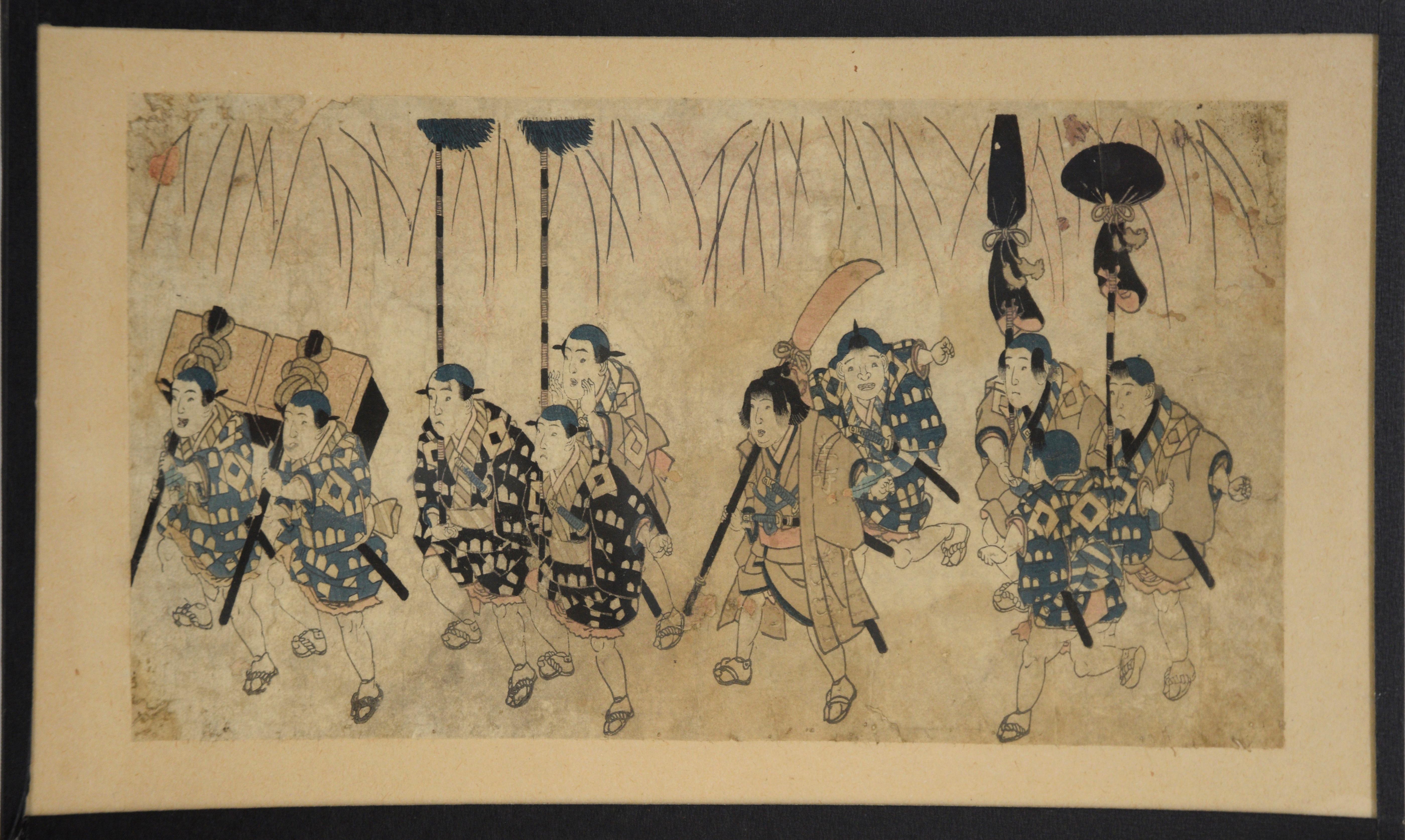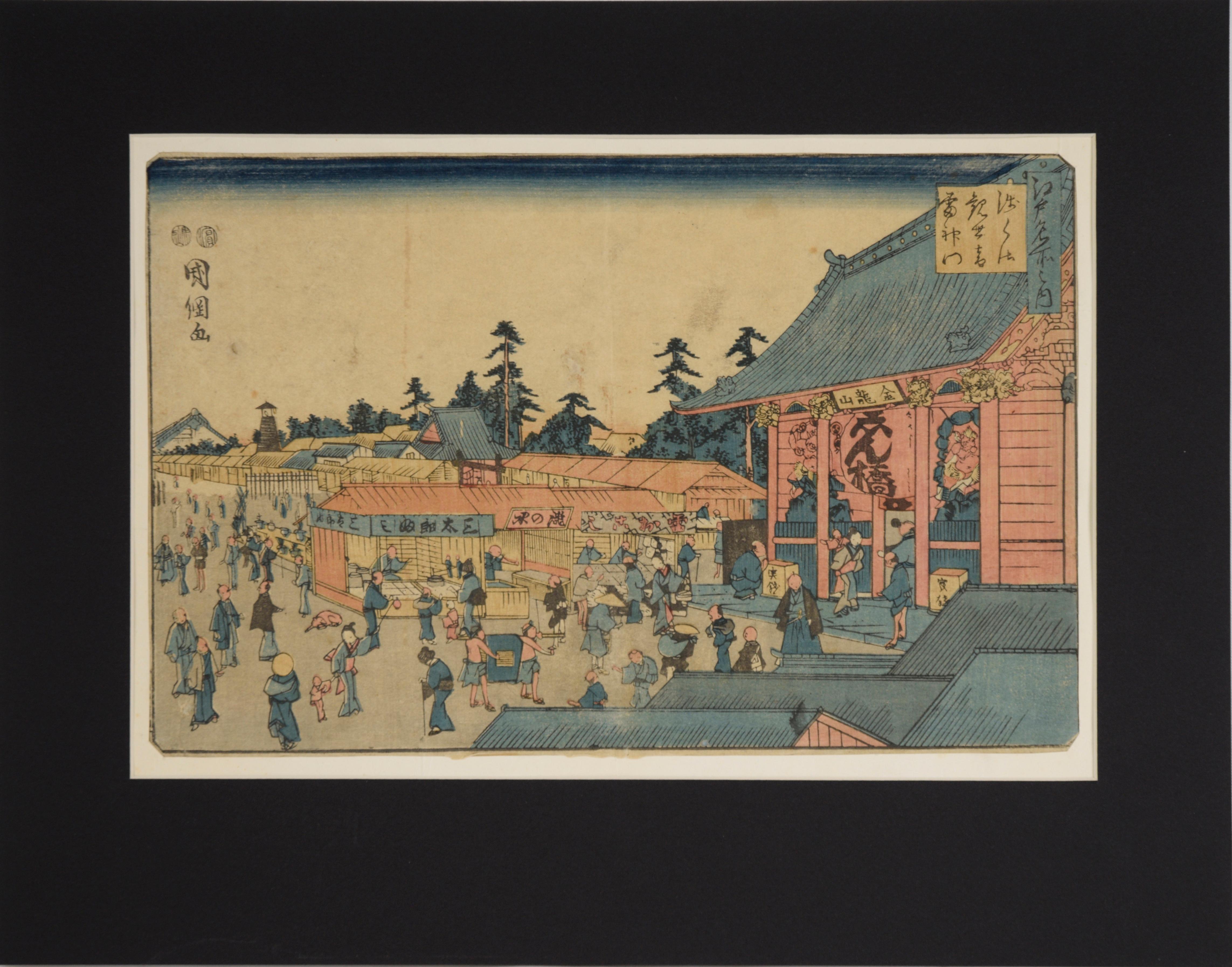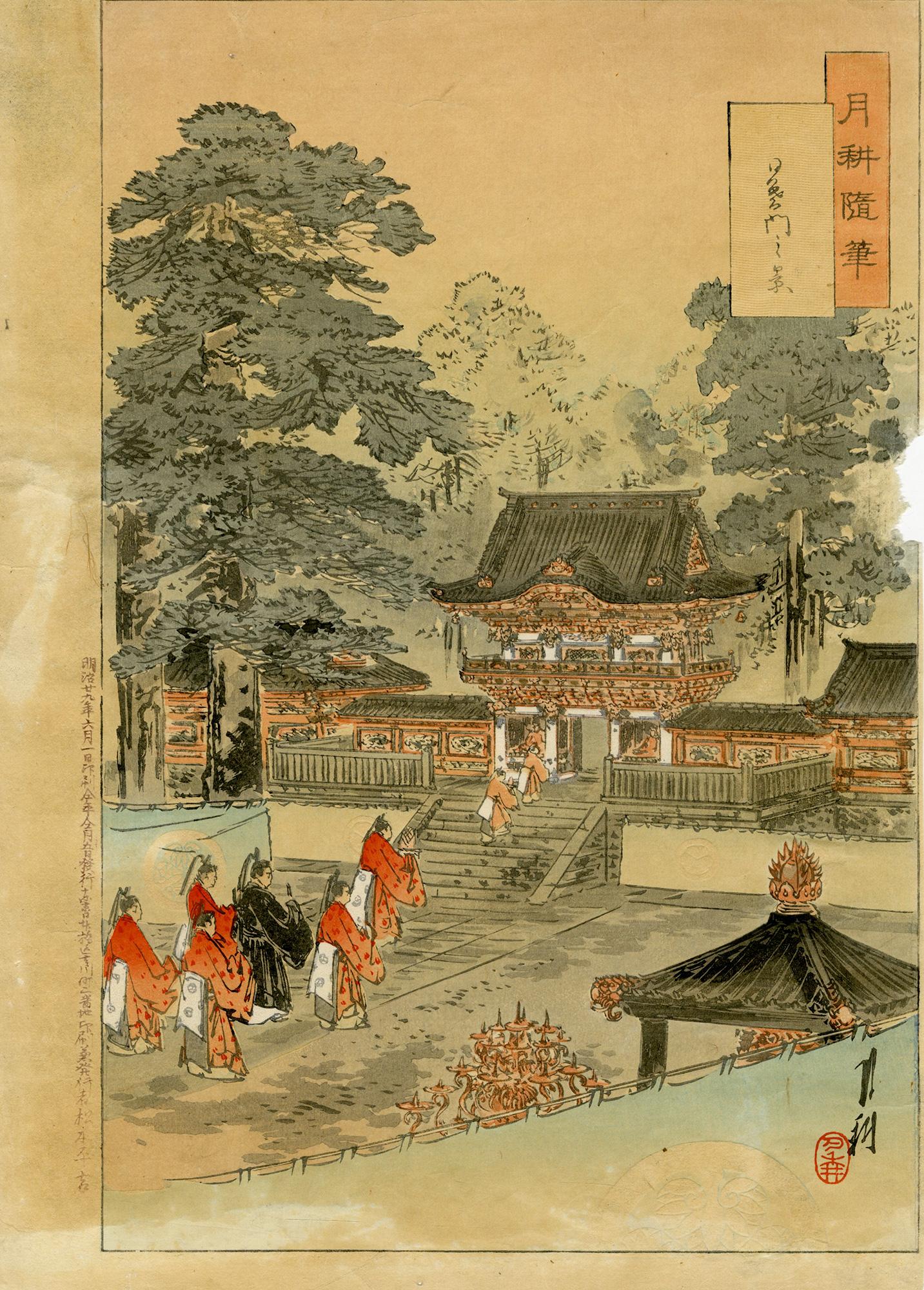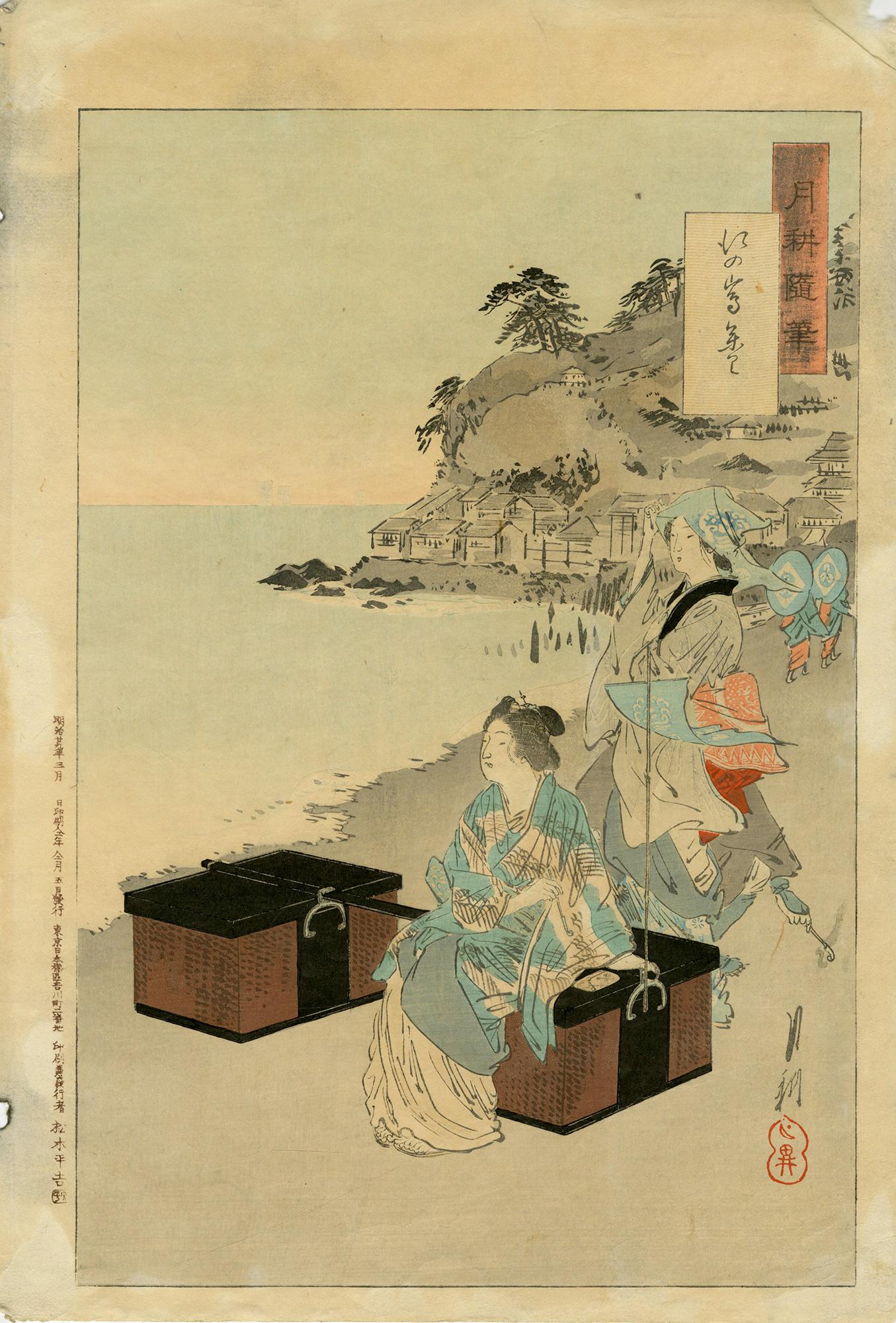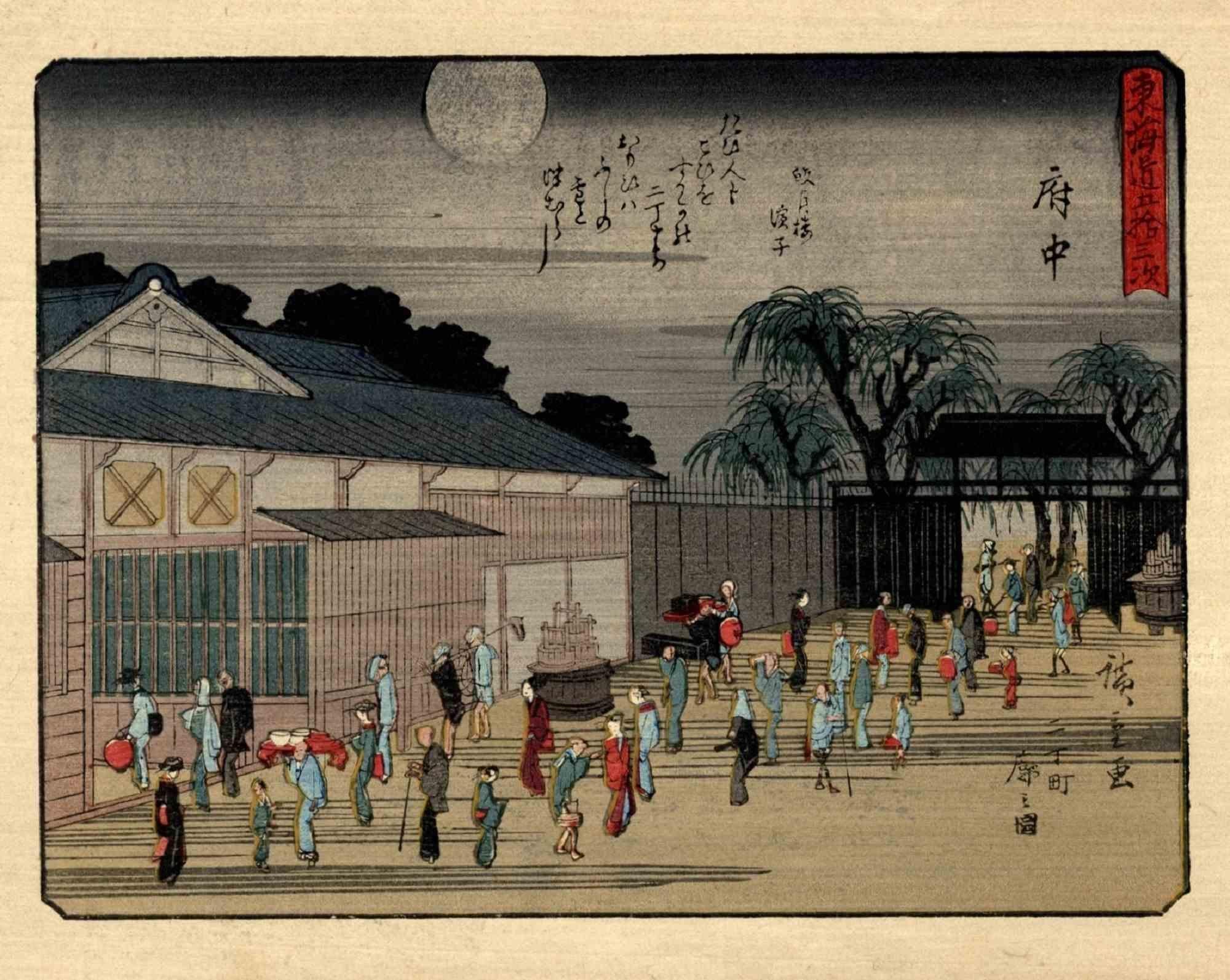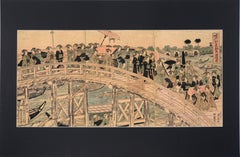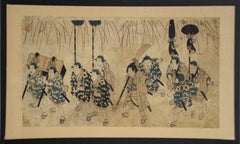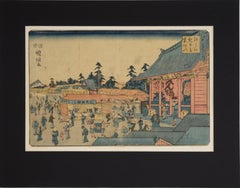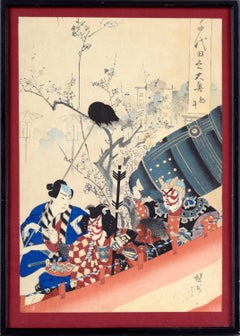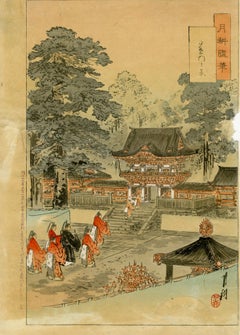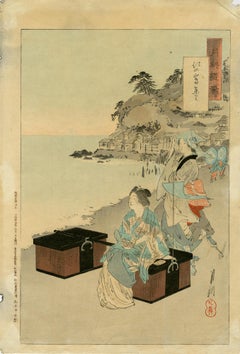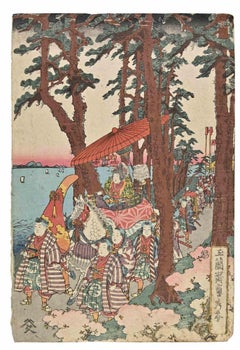KuniyasuThe Pilgrimage Procession to Kinryuzan Temple at Asakusa in the Eastern Capitalmid 19th Century
mid 19th Century
About the Item
- Creator:Kuniyasu (1794 - 1832)
- Creation Year:mid 19th Century
- Dimensions:Height: 21 in (53.34 cm)Width: 35.5 in (90.17 cm)Depth: 1 in (2.54 cm)
- Medium:
- Movement & Style:
- Period:
- Condition:Some normal age toning to paper, consistent with age.
- Gallery Location:Soquel, CA
- Reference Number:Seller: N90691stDibs: LU54213915012
Kuniyasu
Utagawa Kuniyasu was a Japanese artist best known for his prints in the ukiyo-e style as a member of the Utagawa school. Few details are known of Kuniyasu's life. He was born in 1794 and had the given name Yasugorō. His teacher was the Utagawa school master Toyokuni. Kuniyasu's earliest surviving work is his illustrations to the book “Hanashi no momochidori.” He illustrated about a hundred books throughout his career, and designed hundreds of stand-alone prints of beauties (bijin-ga) and actors (yakusha-e). Kuniyasu also used the art names Ippōsai and Nishikawa Yasunobu. He died at age 39 in the seventh month of 1832. His works continue to be issued following his death, which may suggest they were popular.
- ShippingRetrieving quote...Shipping from: Soquel, CA
- Return Policy
More From This Seller
View AllEarly 19th Century Edo Figurative Prints
Ink, Rice Paper, Woodcut
Late 18th Century Edo Figurative Prints
Ink, Wood Panel, Rice Paper
1850s Showa Figurative Prints
Rice Paper, Woodcut
1890s French School Figurative Prints
Ink, Rice Paper, Woodcut
1880s Edo Figurative Prints
Paper, Ink, Woodcut
1820s Edo Figurative Prints
Ink, Rice Paper, Woodcut
You May Also Like
Late 19th Century Edo Figurative Prints
Watercolor, Handmade Paper, Woodcut
Late 19th Century Edo Portrait Prints
Watercolor, Handmade Paper, Woodcut
1920s Modern Figurative Prints
Woodcut
Mid-19th Century Modern Figurative Prints
Woodcut
1920s Modern Figurative Prints
Woodcut
Mid-20th Century Landscape Prints
Sumi Ink, Washi Paper
